

Kansas City

the corporate home of Hallmark Cards
There is no place in Kansas City – or
any city – quite like Union Station. This fully restored landmark is Kansas
City's most prominent destination for cultural and entertainment activities.
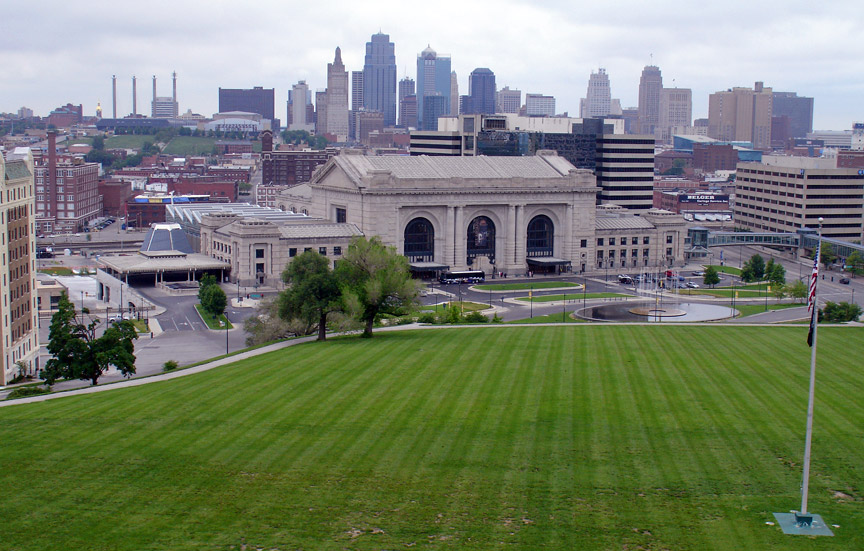
Union Station
About Union Station
Built in 1914, Union Station encompasses 850,000 square feet and originally featured 900 rooms. In its prime as a working train station, accommodated tens of thousands of passengers every year. At its peak during WWII, an estimated one million travelers passed through the Station. The North Waiting Room (now the Sprint Festival Plaza) could hold 10,000 people and the complex included restaurants, a cigar store, barber shop, railroad offices, the nation's largest Railway Express Building (used for shipping freight and mail) as well as a powerhouse providing steam and power.
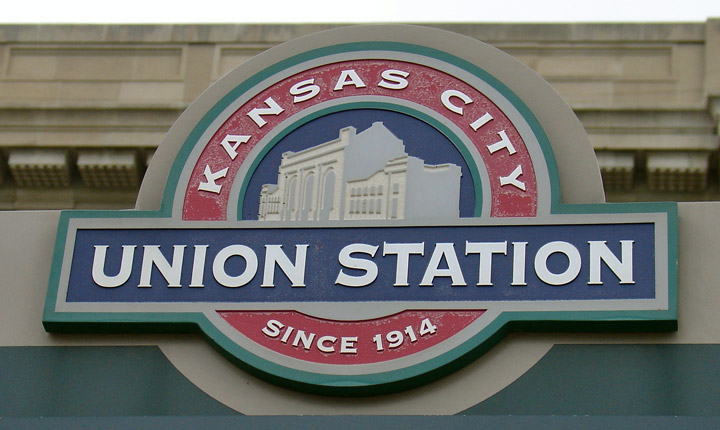
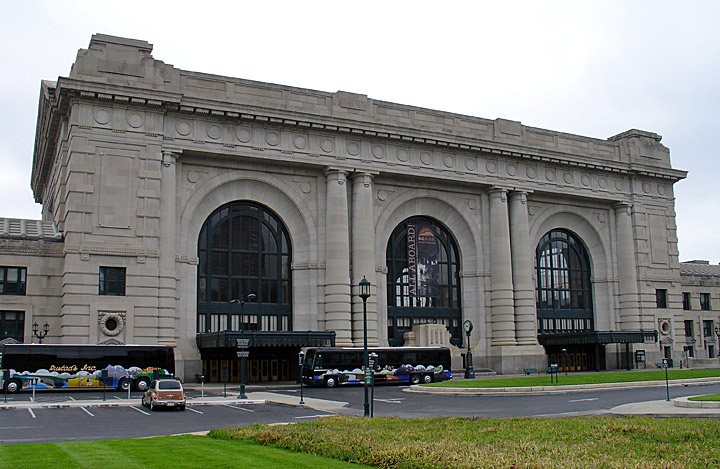
Closed in the 1980s, the Station sat empty and neglected, escaping demolition on
several occasions. In 1996, a historic bi-state initiative was passed to fund
the Station's renovation, which was completed in 1999.
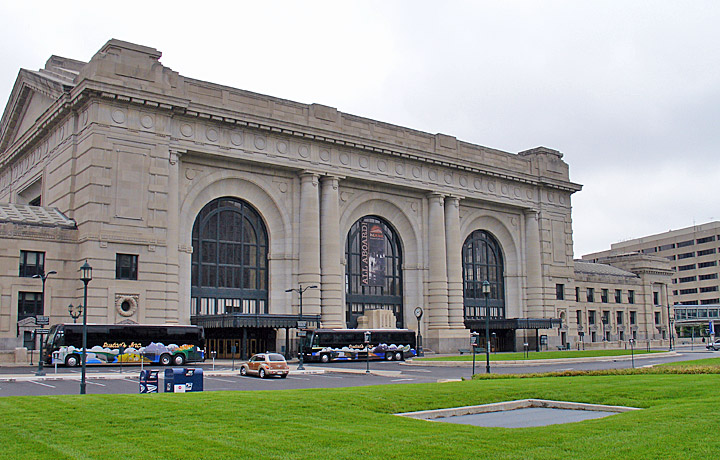
The Station is once again a popular destination for the surrounding community
just stopping by for lunch or to mail a letter from the post office in the west
end of the Grand Hall. The station also draws tourists from all over the world
who marvel at the Grand Hall's 95-foot ceiling, three 3,500-pound chandeliers
and the six-foot wide clock hanging in the Station's central arch.

ticketing areaea

To this we've added a permanent rail exhibit called the KC Rail Experience,
exhibit spaces for traveling exhibits produced by the Smithsonian and other
national organizations, a planetarium, an interactive science center called
Science City and a vibrant Theater District featuring giant-screen movies and
live theater, and much more.ore.

the elaborate ceiling
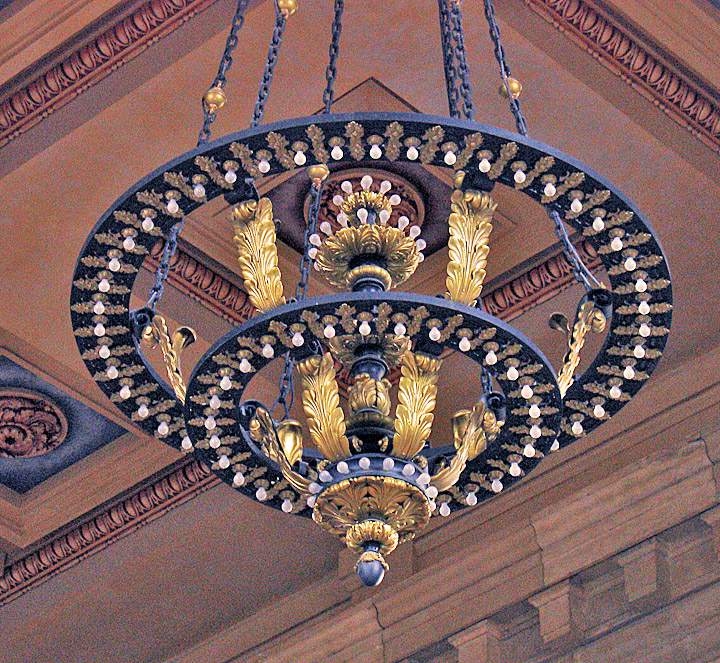
the light fixtureture
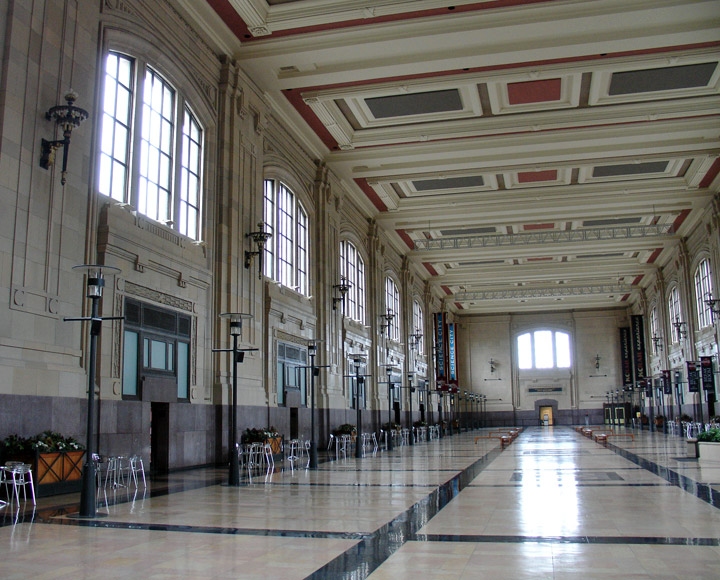
the hallway to the train platforms

the train to Chicago

the Streamliners

current AMTRAK waiting room
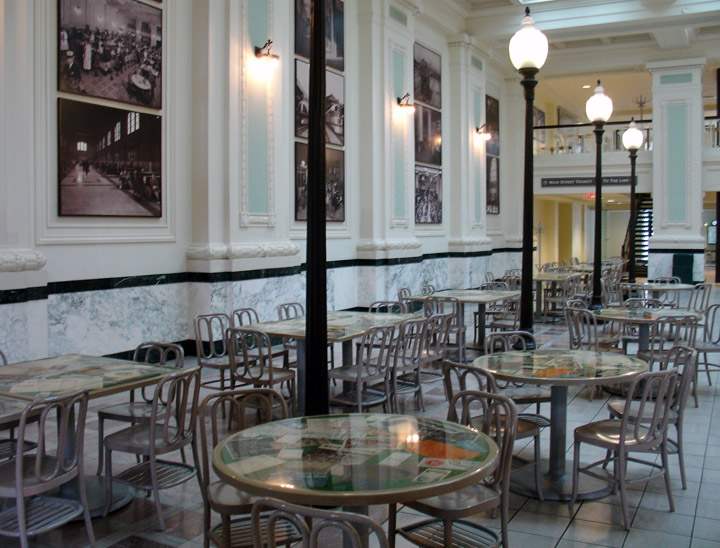
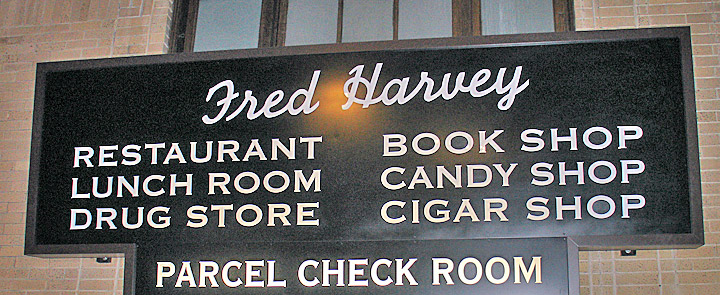
Fred Harvey restaurant
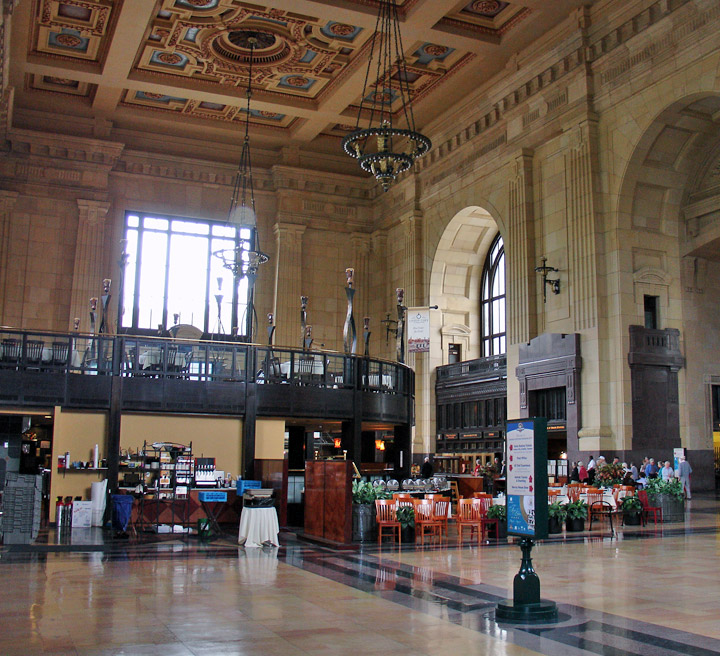
the lobby as it is used today
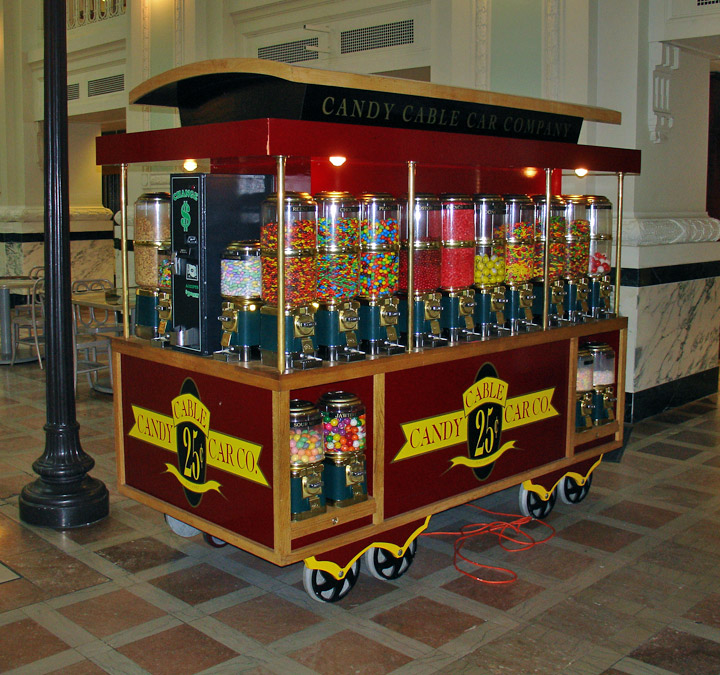
candy cart
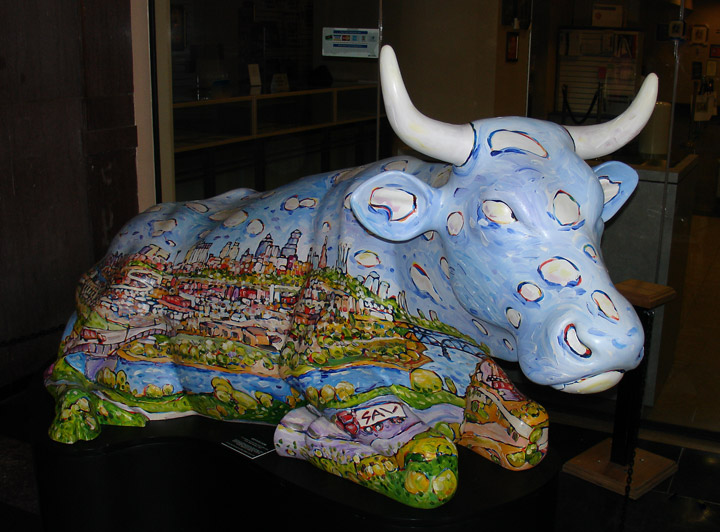
cow in Union Station

another one hiding
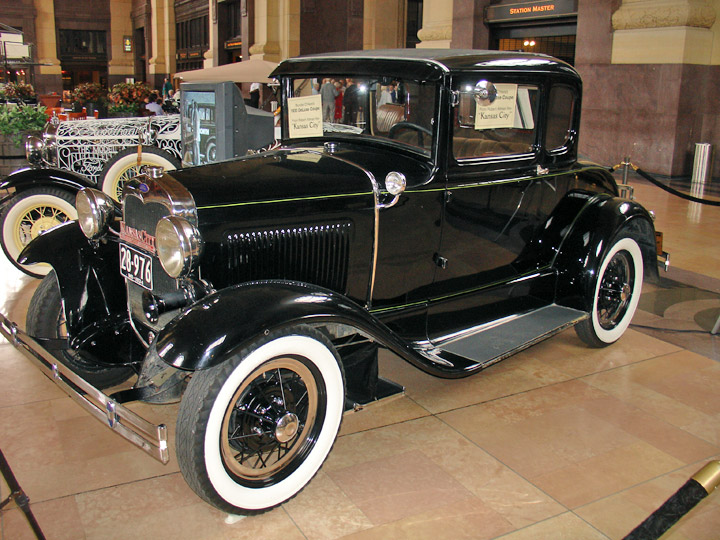
car used in the film "Kansas City"

film billboard
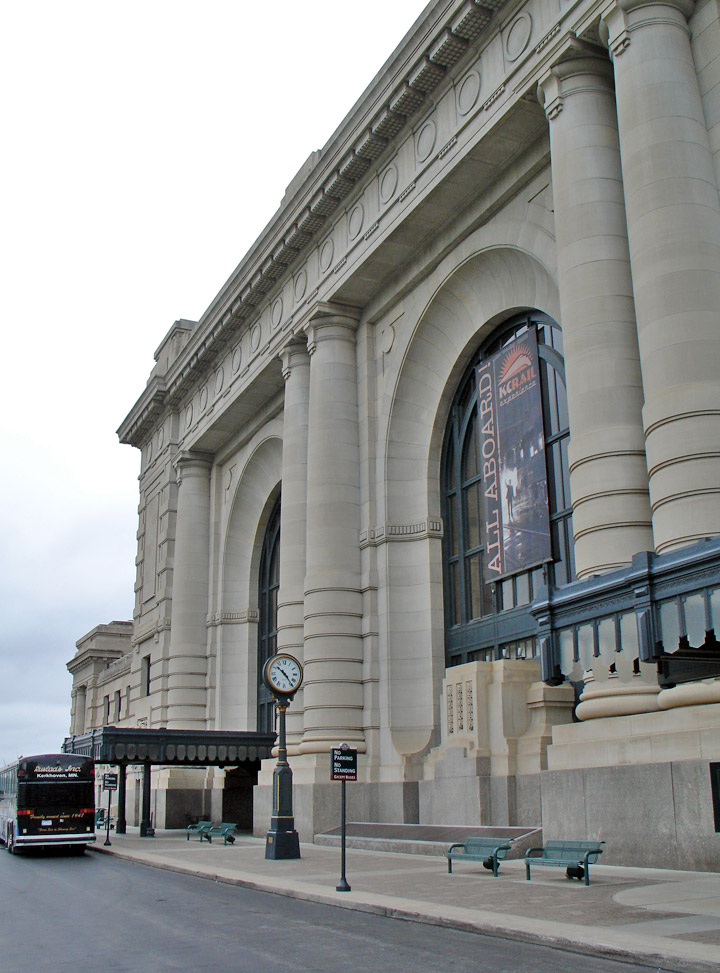
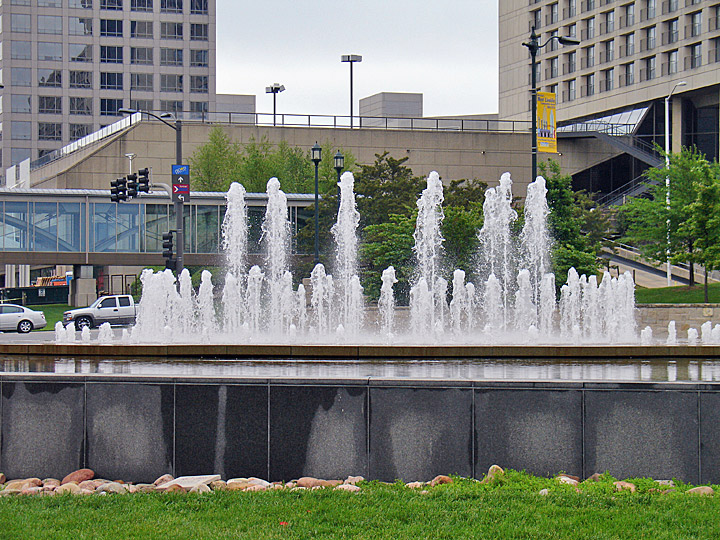
one of many fountains
The Liberty Memorial
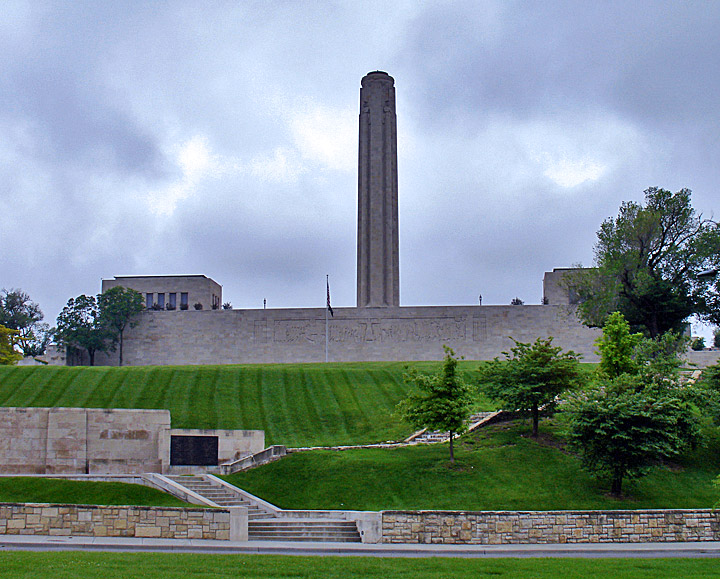
as seen from Union Station
“In honor of those who served in the world war in defense of liberty and our country.” – inscription, on the Liberty Memorial tower in Downtown Kansas City, Missouri, U.S.
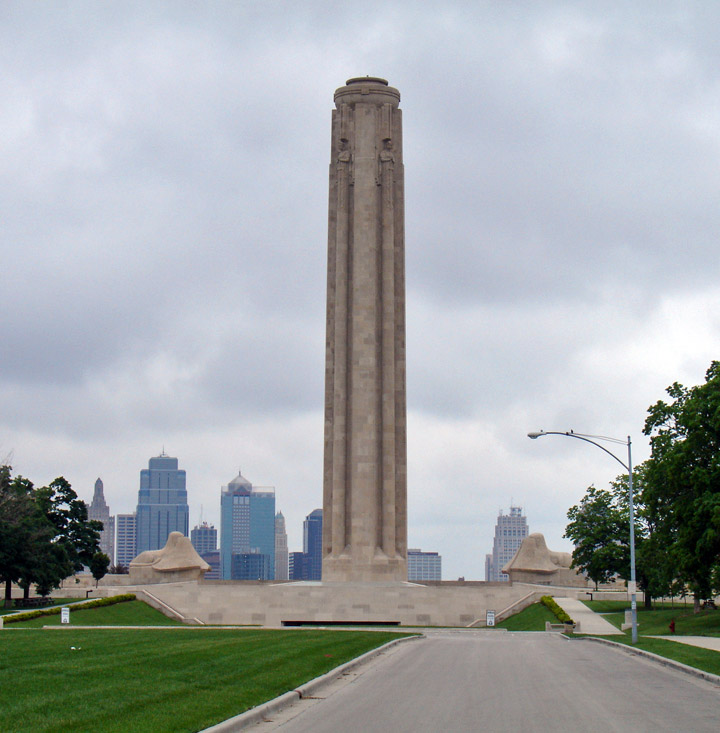
The quote above best depicts the reasons and emotions behind the raising of the
Liberty Memorial Monument. World War I (1914-1918), which ended on the Western
Front in Europe on November 11, 1918, had dramatically changed the world and
deeply affected future generations.
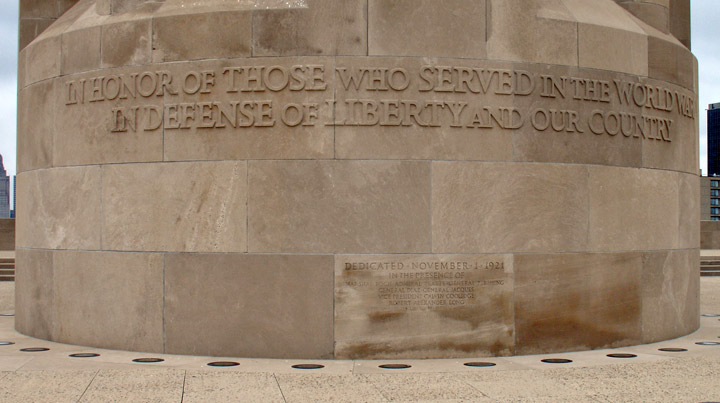
After the guns were silenced and the huge celebrations had died down, concerned
citizens in the United States reflected on the past War and on the losses
sustained. What could be done to honor and remember, they wondered. Just two
weeks after the Armistice, a meeting of Kansas Citians brought forth the idea
and need for the creation of a lasting monument to all men and women in the war
and to those who died.
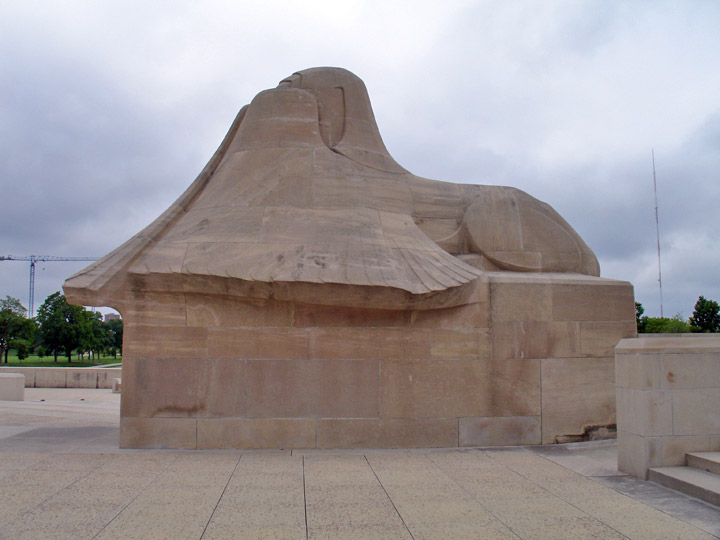
Sphinx in a shroud
R.A. Long, founding president of the Liberty Memorial Association stated: "From its inception it was intended that this Memorial should represent on the part of all people, a living expression for all time of the gratitude of a grateful people to those who offered and who gave their lives in defense of liberty and our country."
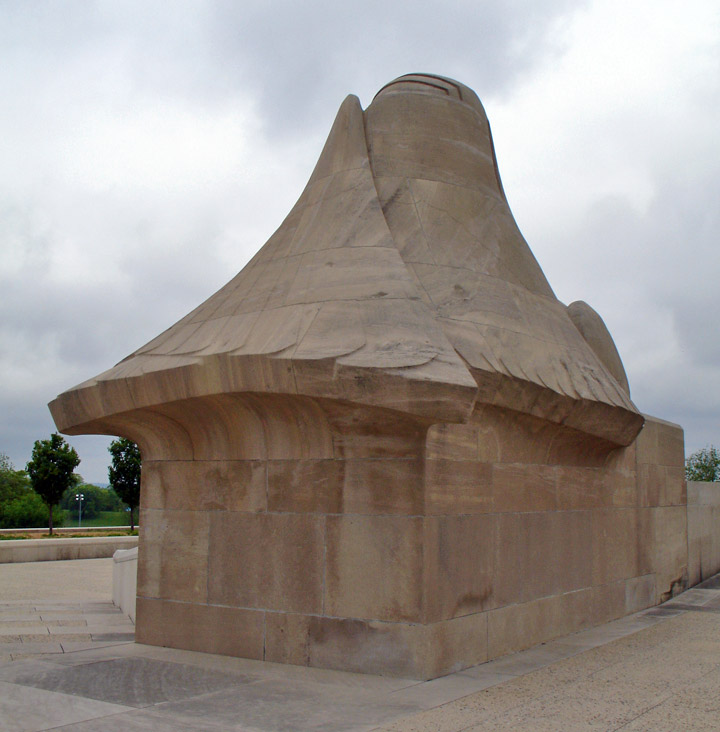
the veiled Sphinx
A community-based fund-raising drive in 1919, led by this Association, raised
over $2,500,000 in less than two weeks through public subscription in Kansas
City and around the nation. This staggering accomplishment reflected the passion
of public opinion about the Great War, which so recently ended. Following the
drive, a national architectural competition was held for monument designs by the
American Institute of Architects.
The competitors were: Bliss and Faville, San Francisco; Paul P. Cret and
Zantzinger, Borie & Medary, Philadelphia; Bertram G. Goodhue, New York; H. Van
Buren Magonigle, New York; York & Sawyer, New York; A.B. Anderson, Kansas City;
Brostrom & Drotts, Kansas City; Edward Buehler Delk, Kansas City; Greenebaum,
Hardy & Schumacher, Kansas City; Samuel M. Hitt, Kansas City; Hoit, Price &
Barnes, Kansas City; Keene & Simpson, Kansas City; Selby & Kurfiss, Kansas City;
Wight & Wight, Kansas City; and C.M. Williams, Kansas City.
The competition yielded the selected design by architect H. Van Buren Magonigle.
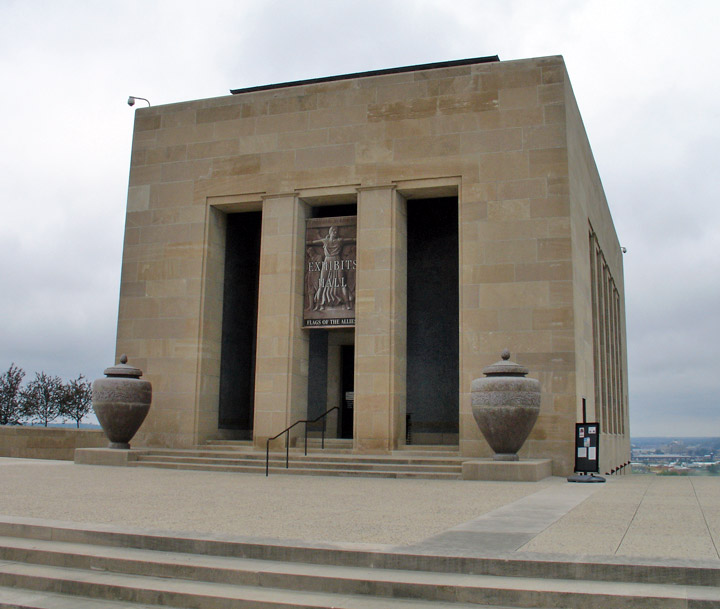
exhibit hall
The site for the Liberty Memorial was dedicated on November 1, 1921. The main
Allied military leaders spoke to a crowd of close to 200,000 people. It was the
only time in history that these leaders were together at one place. In
attendance were Lieutenant General Baron Jacques of Belgium; General Armando
Diaz of Italy; Marshal Ferdinand Foch of France; General John J. Pershing of the
United States; and Admiral Lord Earl Beatty of Great Britain.
After three years of construction, the completed Liberty Memorial opened on
November 11, 1926 –eight years after the end of the War. President Calvin
Coolidge delivered the dedication speech, in which he spoke of how "the
magnitude of this memorial, and the broad base of popular support on which it
rests, can scarcely fail to excite national wonder and admiration."